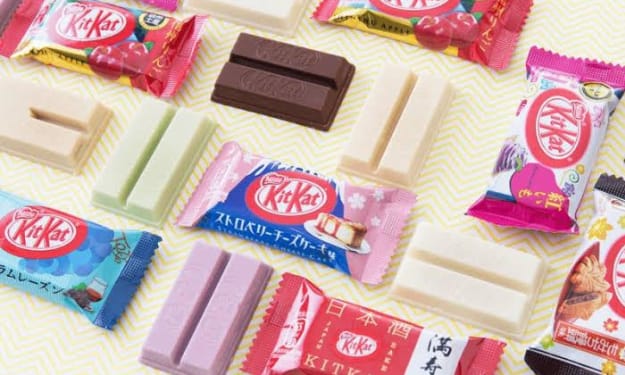The strangest burial habits of the dead around the world.
The strangest burial habits of the dead around the world.

Most of us know two basic ways to say goodbye to the dead, which is to burn the bodies and bury them, but when you search a little deeper, you'll be surprised to learn some strange, creative and strange funerals practised by different cultures around the world, from giving the bodies to the eagles to beating the body, and there are some crazy ways to get rid of the dead.
The news of the death of a loved one affects everyone differently, but then the consequences of that news may take unique forms around the world, where some cultures celebrate life and honour the death of individuals in ways that are often unique to their culture, so let's take a look at the remarkable rituals of burial, so here are some strange funeral rituals from all over the world.
Burial pills: turning the dead into colored pills
Many people in South Korea choose to press the remains in grains that look like gems in different colors and are then displayed at home
While countless burial traditions all over the world include cremation of bodies, South Koreans have taken another step forward by turning the ashes of the deceased into grains so that these beads may have some glitter and come in a bunch of colors, from pink or black to turf.
The beads shall be placed in glass vases or even open in dishes and may take the lead in the house, which is more decorating than the traditional tractor, and in a country where the space is expensive and the burning of bodies is the only realistic option for burying the dead, obtaining something beautiful from this process gives loved ones a new tradition of embrace and treasure inheritance.
Endocannibalism ate the dead.
In the past, Melanesians in Papua within New Guinea and the Wari people in Brazil were eating the dead in order to exorcise the fear and mystery surrounding the concept of death until the Yanomami people were also practicing it.
Famadihana: osteoporosis
It happens every seven years when the people of Madagascar exhume the bodies of their loved ones, understand a piece of cloth and dance with body bags, even though they probably smell very bad, so they sprayed them with wine and told stories about their families.
Buried in a imaginary coffin.
In Ghana, people like to be buried in something that represents their lives, where these coffins include pilots, fishermen' fish and a Mercedes business man's car.
The burial in the Tibetan sky: the corpses were brought to the birds.
Many, especially Buddhists, sometimes cut the body into pieces and left them on a hill to feed on the birds, where Buddhists view the bodies as empty vessels and consider such burial in heaven as an act of goodness and mercy.
Fingercutting in Papua New Guinea
Among Danny's people, the death of a loved one meant that any woman and children of the deceased's relatives had to cut off some of their fingers where it was done to exorcise lives, but now it's forbidden.
Buried on jazz in New Orleans.
With Big Horn's culture in New Orleans' heart, it's not surprising that they play music even in death, where the funeral parade leads the Big Horn, which first plays sad tunes, followed by jazz and optimistic sweater and accompanied by angry dance.
A blindfolded funeral.
Inside Benjut in the northwest of the Philippines, they blindfold their dead and put them near the main entrance to the house.
Makes it look like they're still alive.
The Tinguian people of the Philippines are wearing their best clothes, sitting in a chair and putting a burning cigarette in their lips.
When it comes to the Philippines, where there was a lot to choose from, where the deceased Tenguin people wore the finest clothes and sat on a chair and often put a cigarette on their lips, while the Benguet residents had their dead eyes cramped before putting them on the chairs at the entrance to the house.
The Cibiono people also wear children attending funerals in red to reduce the opportunity to see ghosts, where the Sagada region is characterized by coffins hanging from slopes, making the lives of the dead closer to paradise, while people in Cavette often bury the deceased vertically in a hollow tree and choose the person before death, resulting in a variety of areas in the Philippines that are not above them.
Burying the cafetino tree.
Cafetino is buried in those living near Manila where their dead are buried in the trunk of a hollow tree and the tree is chosen shortly before the death of a person.
Burying the kitchen of Abaio.
Members of the Abaio tribe living in the northern Philippines bury their dead under the kitchen.
Burying a friend of the environment.
In this way, you go beyond embalming and you get decomposable boxes of sirens that decompose in the ground.
The funeral of the Zoroastrian Eagle.
In this way, the body is washed with bull urine and then visited by a sacred dog or then placed on the top of the Silence Tower, where the eagles devour it quickly, as these eagles seem to feed well
One of the Zoroastrian traditions requires vultures to preserve the ancient burial rituals alive, and in this tradition where the body is believed to desecrate all that it touches, including the land and fire, so lifting the body to the sky to be devoured by eagles was the only historic option where urine of the bull was used to clean the body before using the tools that were later destroyed, to cut off the clothes and then put the body on the top of the tower of silence away from the living who could be contaminated with it.
Heda, the funeral of the totem pole.
The Heida people in North America had a special ritual for the death of the President of O'Shaman, where the body would be crushed into a dough with truncheons and put in a bag box and then put in a funeral totem column in front of the deceased person's house
Burying water.
It has embraced many cultures, especially in the Nordic countries, where water is in their favorite rituals for the dead, and who put coffins on the waterfronts to the actual use of water as a burial ground, where some put corpses unfavorably in death ships either along the river or are sent to the ocean, bringing the bodies back to the gods or places that the inhabitants of the region value.
Presentation
The celebration of the deceased's life can take many forms, since a tradition of Faranasi in India includes the viewing of dead people on the streets and the character of dead bodies with colors that highlight the virtues of the deceased.
In an attempt to encourage souls to reach salvation and end the cycle of reincarnation, where bodies are sprayed with water from the Gang River and then cremated, which is a religion that burns the dead in the city main burning areas.






Comments
There are no comments for this story
Be the first to respond and start the conversation.